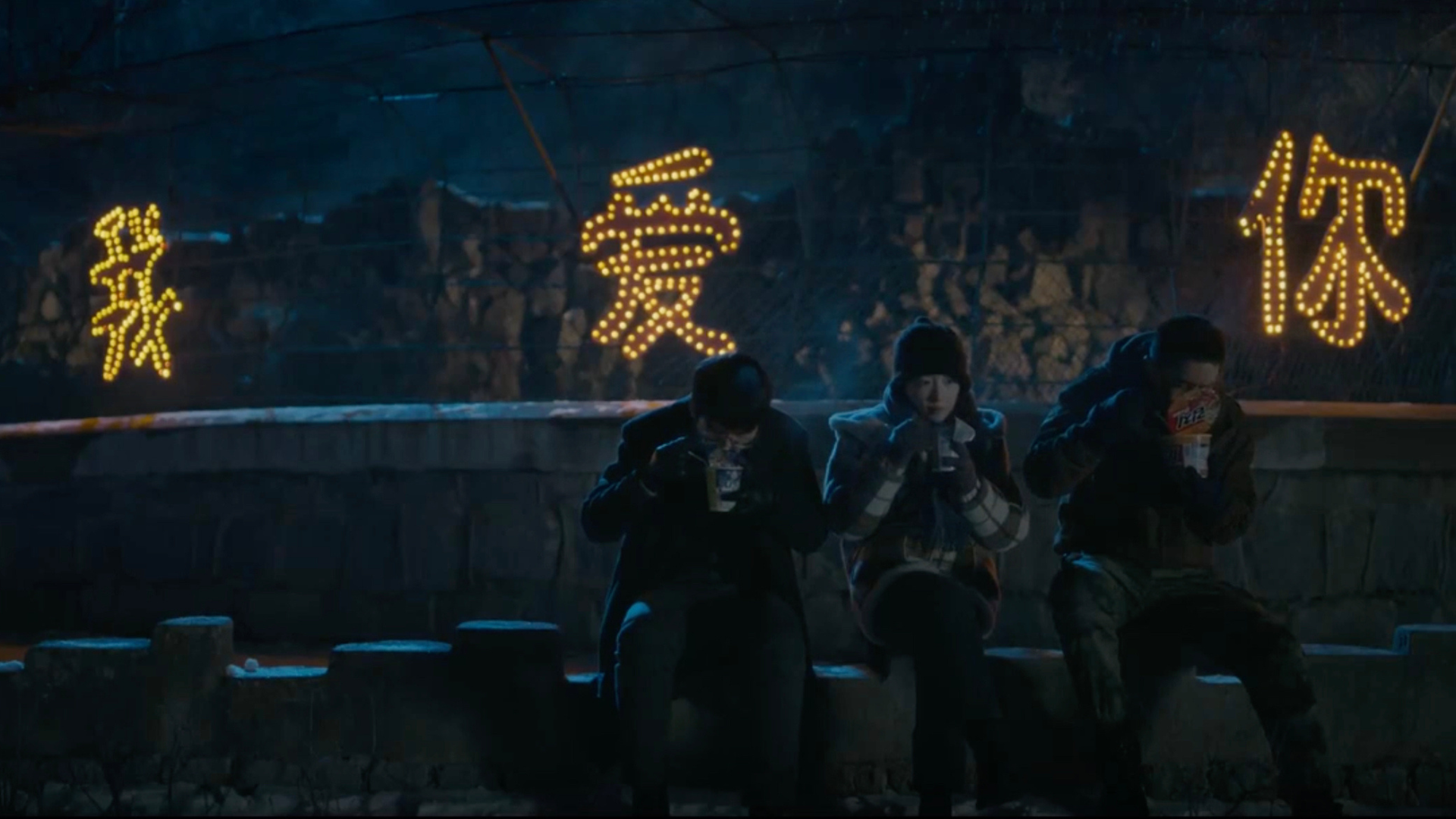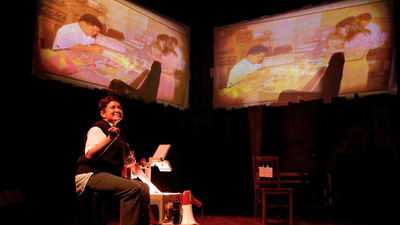Exterior, winter. Workers are carving blocks of ice from a frozen river, then stacking them onto a conveyor belt where they are transferred onto the back of a truck. The camera pans gently to a broad vista, where a bright blue tour bus is traversing a snow-blanketed bridge. Off screen, we hear a female tour guide informing her red-capped passengers that they will be returning to their hotel shortly, and thanking them for their company. The camera shifts to Nana (Zhou Dongyu). Beneath the polish of her delivery, there’s a heartfelt warmth to her gratitude.
After addressing the group, Nana returns to her seat and rubs her ankle bone. We wonder if it’s been a long day on the road, or if she’s nursing an old injury. The film draws out our process of making acquaintance with its main characters by showing us how and what to pay attention to. We catch fleeting glimpses of wintry surroundings whipping past the bus’s windows, but the group’s exact location remains a mystery. We’re isolated, but intrigued. The camera alternates between Nana and the tourists: she alone shows lingering curiosity towards the snow-filled landscape.
The opening scene of Anthony Chen’s “The Breaking Ice” (2023) sets the stage for protagonist Nana’s ambivalent relationship with the road. Against the backdrop of the Changbai Mountains, a majestic range spanning northern China and North Korea, the story follows a trio of young people connected by circumstance in the border city of Yanji. The young Shanghainese urbanite Haofeng (Liu Haoran) loses his wallet while on tour with Nana. Feeling sympathetic, she invites him for an evening out with her close friend, the candid chef Xiao (Qu Chuxiao). A night of drunken leisure causes Haofeng to miss his flight, and leads to an impromptu weekend adventure, where the youthful out-of-towners explore their icy mountainous environs together.
The road, typically seen as a symbol of freedom and possibility, becomes in Chen’s hands a source of livelihood, a site of curious exploration, and also a reason for frustration and fatigue. To be on the road—and stay on it—involves not just physical, emotional, and psychological challenges or material expenses, but also the need for fair access. The shared mobility of Nana, Haofeng, and Xiao confronts this reality. Their journey on the road, initially a liberating escape from their everyday constraints, becomes a space where they grapple with the limitations imposed by their respective societal contexts.
Even in one of the world’s most remote places, three Asian urbanites struggle to break free.
We’re probably most familiar with the road movie in American film culture, where they tend to reflect complex post-war societal sentiments and tropes, oscillating between a burgeoning confidence spurred by wartime triumph and a deep-seated crisis of faith born from the ashes of conflict and suffering. On the one hand, the euphoria of military victory often propels characters into bold adventures, a cinematic metaphor for a nation rekindling its spirit of exploration and forward momentum—in Dennis Hopper’s “Easy Rider” (1969), two bikers speed across the country with the drug-fuelled goal of reaching New Orleans in time for Mardi Gras. On the other, the shadow of war-induced trauma casts a more introspective mood, with protagonists embarking on solitary journeys. These films often feature aimless rebels, lost souls seeking new beginnings, individuals venturing far from home, or those fleeing various forms of oppression. These include revolutionary Ernesto “Che” Guevara, whose memoirs take compelling cinematic shape in Walter Salles’s “The Motorcycle Diaries” (2004). In reckoning with a profoundly altered world, these reflective quests serve as a poignant cultural barometer, capturing the post-war period’s emotional dichotomies.





